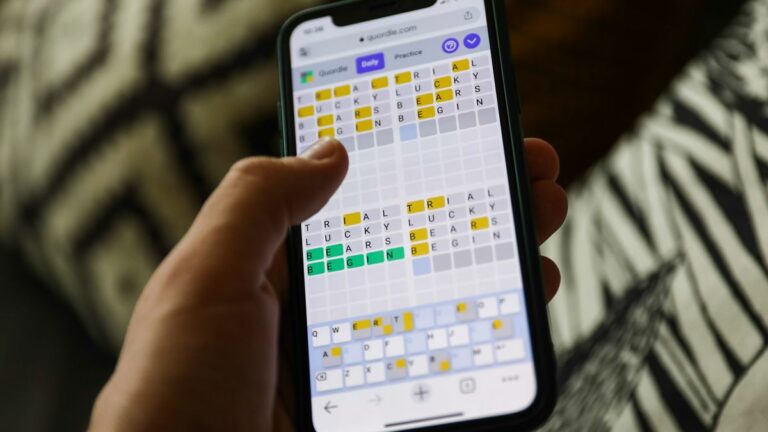
Artificial intelligence (AI) is influencing our lives in increasingly new ways. Algorithms influence the cost of your car insurance; chatbots help you write that important email to your boss; political deepfakes cause chaos on social media; even your local stores personalize product recommendations with AI.
Also: I taste-tested Gobble and the pricier meal kit delivery service was worth the money
At home, however, it’s a different story. You may have a voice assistant-enabled speaker and some smart lighting, but AI has taken over little else — until now.
Enter Brisk-It, which claims to be “the first AI-powered grill.” The website boasts that with Vera, its generative AI cooking system, users can “Ask anything. Say anything. Cook anything.”
With that much confidence, I had to put it to the test.
Meet the contenders
While my partner and I are nowhere near pitmaster level (yet), we consider ourselves barbecue enthusiasts and have some degree of experience and talent. Over time, we’ve upgraded from a basic barrel grill (rigged like something akin to a smoker) to a Weber kettle, Masterbuilt 800, Traeger Ironwood — and now a Brisk-It.
We enjoy using our grills’ intelligent features but stick mostly to our preferred recipes and timing. So, is handing over everything from temperature control to resting periods to AI going too far?
Also: Upgrade your kitchen with these 11 smart gadgets
We decided to host a cook-off to find out. I admit that I did not want an AI system to show us up, so to fairly pick a winner, we chose to do a blind taste test judged by a group of very willing and hungry friends.
1. Masterbuilt Gravity Fed Series 800
The Masterbuilt Gravity Fed Series 800, a $799 smoker, is a Wi-Fi-connected barbeque with a large, vertical charcoal hopper that accepts around 10 lbs of fuel and offers 800 square inches of cooking space, including a top shelf. You can use the display and knobs to control the smoker’s temperature or manage your cook with the accompanying Masterbuilt mobile app.
2. Traeger Ironwood
The Traeger Ironwood is a $1,600 wood pellet grill and smoker. It can accommodate up to 396 square inches of cooking space, plus 220 square inches provided by accompanying racks. The wood pellet hopper accepts around 22 lbs of fuel, making it a great option for low-and-slow overnight cooks. This barbecue also has a touchscreen display and a mobile app.
3. Brisk-It
The final contestant is the $600 (on sale at the time of writing, typically $850 retail) Brisk It Origin 580 A.I. Powered and Wi-Fi Grill. While available in larger sizes, this option provides 580 square inches of cooking space and includes a small top rack and a wood pellet hopper with a capacity of 22 lbs. You can control temperature via the display or accompanying app, which hosts Vera, the grill’s AI assistant.
The tech within these grills
We have a particular fondness for adding low-and-slow items to our menu, including pulled pork and brisket. This often means cooking overnight — we like using safe, reliable equipment that we can leave unattended while we sleep (don’t try this at home unless you have full faith in your equipment).
Also: This indoor smoker turned me into a BBQ pitmaster in my own kitchen, and it’s $300 off right now
With mobile alerts and alarms enabled, we have done overnight cooking with each barbecue mentioned above without issue. We’ve found that some of the real benefits come with the smokers’ technological features.
There are advantages and disadvantages to each smoker in this competition. Let’s explore some of their main features.
1. Masterbuilt Gravity Fed Series 800
The Masterbuilt was my first acquisition, and I was delighted that the accompanying app was something new beyond what I’d practiced with a basic barrel. The mobile app now falls behind its competitors, as it doesn’t offer much beyond a temperature manager, basic recipes, and session graphs — but the latter is comprehensive, and the app can store multiple sessions.
Pros:
- Solid charcoal option with a reasonable amount of smoke
- Reliable temperature management at a higher range
- The fastest option to ignite
- Large cooking space
Cons:
- Occasional error codes
- Temperature control can be less stable in long sessions
- Cleaning can be awkward
2. Traeger Ironwood
The Traeger mobile app is superior to the Masterbuilt mobile application. I have no complaints about the smoker’s build quality beyond some of the soldering, which could be tidier, especially considering the price point.
Pros:
- Solid wood pellet option with plenty of smoke
- Reliable temperature management up to 400f
- Reasonable ignition time
- Attractive touchscreen and app
Cons:
- Occasional lid error codes (non-critical)
- Soldering and finish could be cleaner
- 2.4GHz-only app connection
3. Brisk-It
The Brisk-It app is colorful and attractive. It has sections dedicated to tips and InnoGrill recipes, including one for learning barbeque principles and about cuts. There isn’t a huge repository yet, but the content that is already there is well laid out and informative.
Pros:
- Throws out far more smoke than I expected
- Stall detection
- Great for small gardens
- Easy DIY build
Cons:
- Slow ignition time
- Build quality could be improved
- No touchscreen
Using Vera, the AI assistant on the Brisk-It
Now, let’s investigate the main contender: Vera. Made available in the Brisk-It app in June, Vera aims to take the guesswork out of cooking by providing recipes, timings, and rest periods based on your queries. (It took me a while to find, as you need to go from the main screen to settings before choosing Vera A.I.)
As the user, you tell Vera what you want to cook. The AI assistant will then respond with an Innogrill recipe, including ingredients, preparation — such as removing membranes and trimming excess fat — temperatures, and timings. Steps may also include wrapping and resting.
If you’re happy with the proposed cooking steps, select “send to grill” and let the AI do the rest. You will be alerted when a step is completed, like a preheat or an initial smoke at 225°F for a set amount of hours. While the AI will handle temperature control for you, you will be summoned and given a timed window to perform manual tasks included in the recipe, such as wrapping meat or spritzing.
Also: This futuristic portable battery kept my home running during an outage. Here’s how
Vera will also adjust your cook if you miss a step — such as forgetting to wrap — and will actively monitor your grill’s temperature, as well as generate smoke.
Brisk It told me Vera uses a combination of private data sets created by the company, as well as publicly available data sourced from the internet. The Brisk It AI model screens information, including recipes, gleaned from the internet to ensure only wood pellet grill BBQ recipes are included. The app warns users that Vera can make mistakes, and you should double-check results for accuracy.
For example, the recipe below is for ribs, generated through a simple query without any reference to previous barbeque experience.
I enjoy using the 3-2-1, 225°F method for ribs, and as shown in the snapshot below, Vera produced a good step-by-step guide when I asked, “I want to cook a rack of ribs using the 3 2 1 method.” So, if there’s a specific method you like to use, you can ask the AI to find you a recipe.
You can either type or say what you want to cook. I have no complaints — the voice-to-text function was accurate every time I tried it out.
Backyard methodology
We expect differences between each from the outset, considering that two are wood pellet smokers and one utilizes charcoal. However, the main differences were that two were controlled by humans, whereas the other was managed by the AI assistant, and we followed its instructions to the letter.
Also: Everything you need for a 4th of July party
Regarding our AI rival, we had a conundrum: Brisk It can only have one recipe active at a time. Since we intended to cook both a brisket and pork shoulder at the same time, we compared the recipes provided by Vera. The brisket is the longer cook, so we made this the active recipe, but we wrote down all of the provided steps for the Boston Butt and followed them to the second. As both recipes required a starting temperature of 225°F and a shift to 250°F , we could cook them simultaneously.
What’s cooking?
We prepared three full-packer briskets and three Boston Butts, one for each smoker, sourced from iDevour and Grid Iron Meat. Each was roughly the same weight and trimmed in the same way, with Pit Boys SPG and Killer Hogs AP rub applied.
We used Vera’s directions to cook the meat on the Brisk-It, whereas we relied on our own techniques for the Masterbuilt and Traeger Ironwood. The results were color-coded, and our guests, having tried each and unaware of which was which, voted with colored counters for their favorite.
We used each smoker’s probes to monitor temperature, backed up by a Thermapen.
The results
Did our AI rival win? No — thankfully, or we would be going back to our original cooking class — but I was very impressed with its performance.
The Traeger won the blind taste test by a mile when it came to the pulled pork (eight out of 14 votes rather than 17, as some of our guests could not eat pork), and came in a close second for the brisket (six out of 17). It created the best bark and reached the right internal temperatures first out of all three to safely wrap and hold our dishes. However, I did note temperature fluctuations that were hard to control, especially when the Supersmoke function was active.
Also: Don’t break your back while you deep clean. Use these gadgets instead
The Masterbuilt, frankly, became a nightmare after around eight hours of cooking. Despite starting very well, it struggled to reach 250°F from 225°F , and it took a temperature change request to 400°F to reach even this level. Because of this, the meats were the last to be pulled off, and the bark, in our opinion, was rather poor.
Despite this, it seems our guests loved the brisket’s taste, as it came in first place with seven votes out of 17. Regarding the pulled pork, it only marginally beat the AI, with three votes out of 14.
Vera’s suggestions won Brisk-It four votes for the brisket and two for the pulled pork. Perhaps if the test had not included a charcoal option, the results would have been different, with three pellet grills launched against each other. Our guests loved each option and said that each produced great meat overall — some even said it was restaurant quality.
Also: I tested a $1,900 robot vacuum and mop for a month. Here’s why it’s worth it
Out of all three, the Brisk-It was the easiest, simplest smoker to handle. We topped up the hopper and left it to its own devices, and the temperature regulation was completely spot on. What I would like to see in a future update, however, is for the end of the cook to have an option to carry on the final step for longer.
For example, when the brisket recipe called for a four-hour cooking stage or when the internal temperature of the meat reached 200°F , the internal temperature was only 192°F, so we chose to continue. I’d like a “temperature or time” option that users can select based on their preferences.
ZDNET’s buying advice
Overall, we had the most fun with the Traeger. The Masterbuilt was the most problematic over a long cooking period but provided some of the best flavor, and the Brisk-It was a set-and-forget, easy cook with the best temperature regulation.
For those who would like to impress at the next cookout without worrying too much about the right temperatures or management, the AI grill could certainly have a place in your backyard. For the inexperienced, it takes the guesswork and worry out of each step — plus, there were more than a few covetous eyes present when we explained how it and the AI app worked.
With further development, I could see AI becoming a commonplace feature in smart smokers, and who knows — with enhanced recipes that also process and include the tips and tricks provided by today’s human pitmasters, perhaps Vera will win the next competition.


















+ There are no comments
Add yours